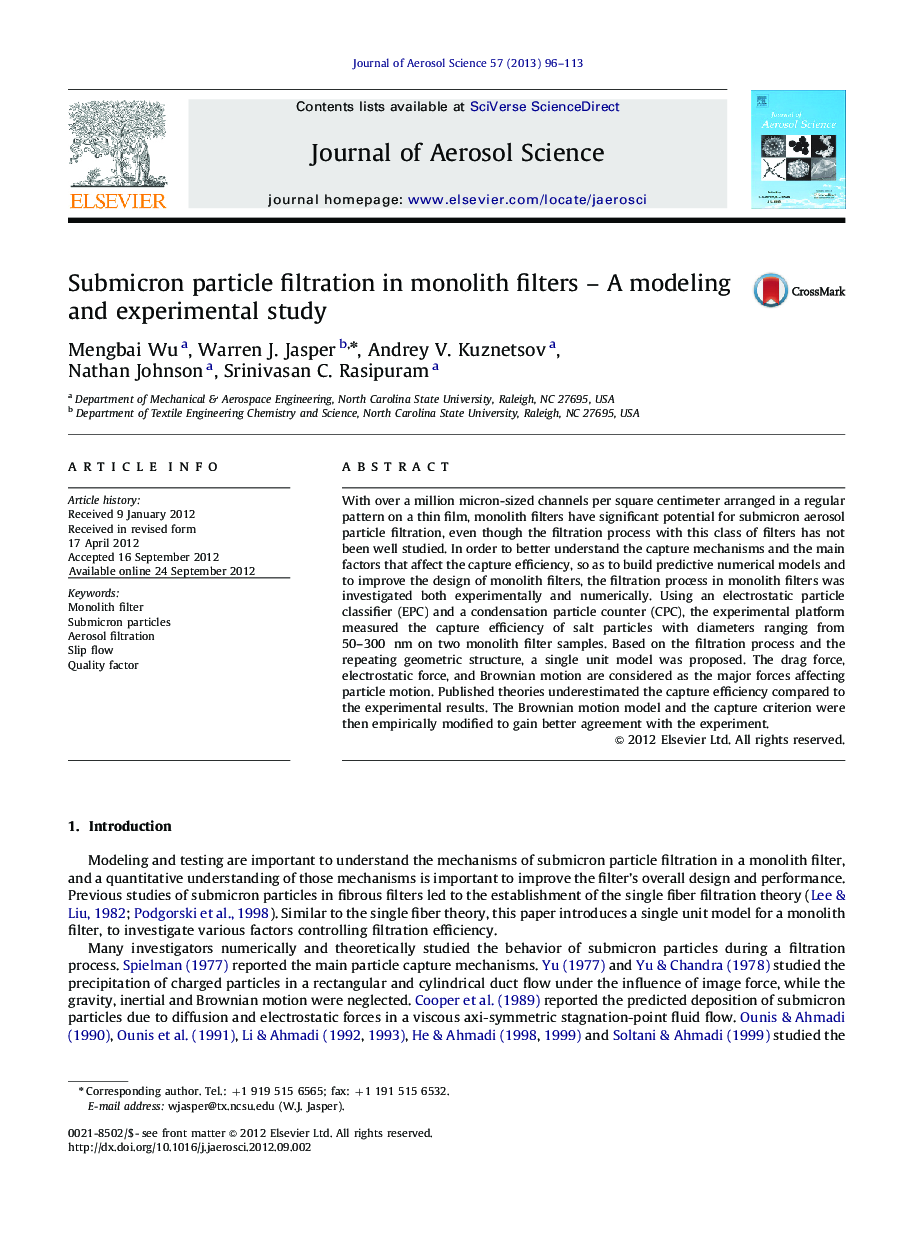| Article ID | Journal | Published Year | Pages | File Type |
|---|---|---|---|---|
| 4452521 | Journal of Aerosol Science | 2013 | 18 Pages |
With over a million micron-sized channels per square centimeter arranged in a regular pattern on a thin film, monolith filters have significant potential for submicron aerosol particle filtration, even though the filtration process with this class of filters has not been well studied. In order to better understand the capture mechanisms and the main factors that affect the capture efficiency, so as to build predictive numerical models and to improve the design of monolith filters, the filtration process in monolith filters was investigated both experimentally and numerically. Using an electrostatic particle classifier (EPC) and a condensation particle counter (CPC), the experimental platform measured the capture efficiency of salt particles with diameters ranging from 50–300 nm on two monolith filter samples. Based on the filtration process and the repeating geometric structure, a single unit model was proposed. The drag force, electrostatic force, and Brownian motion are considered as the major forces affecting particle motion. Published theories underestimated the capture efficiency compared to the experimental results. The Brownian motion model and the capture criterion were then empirically modified to gain better agreement with the experiment.
► Experimentally obtained capture efficiency with different monolith filter samples. ► Validation and revision of a single unit model for monolith filter. ► Investigations of the main capture mechanisms and the main affecting factors. ► Investigation of the quality factor for a random monolith filter sample.
